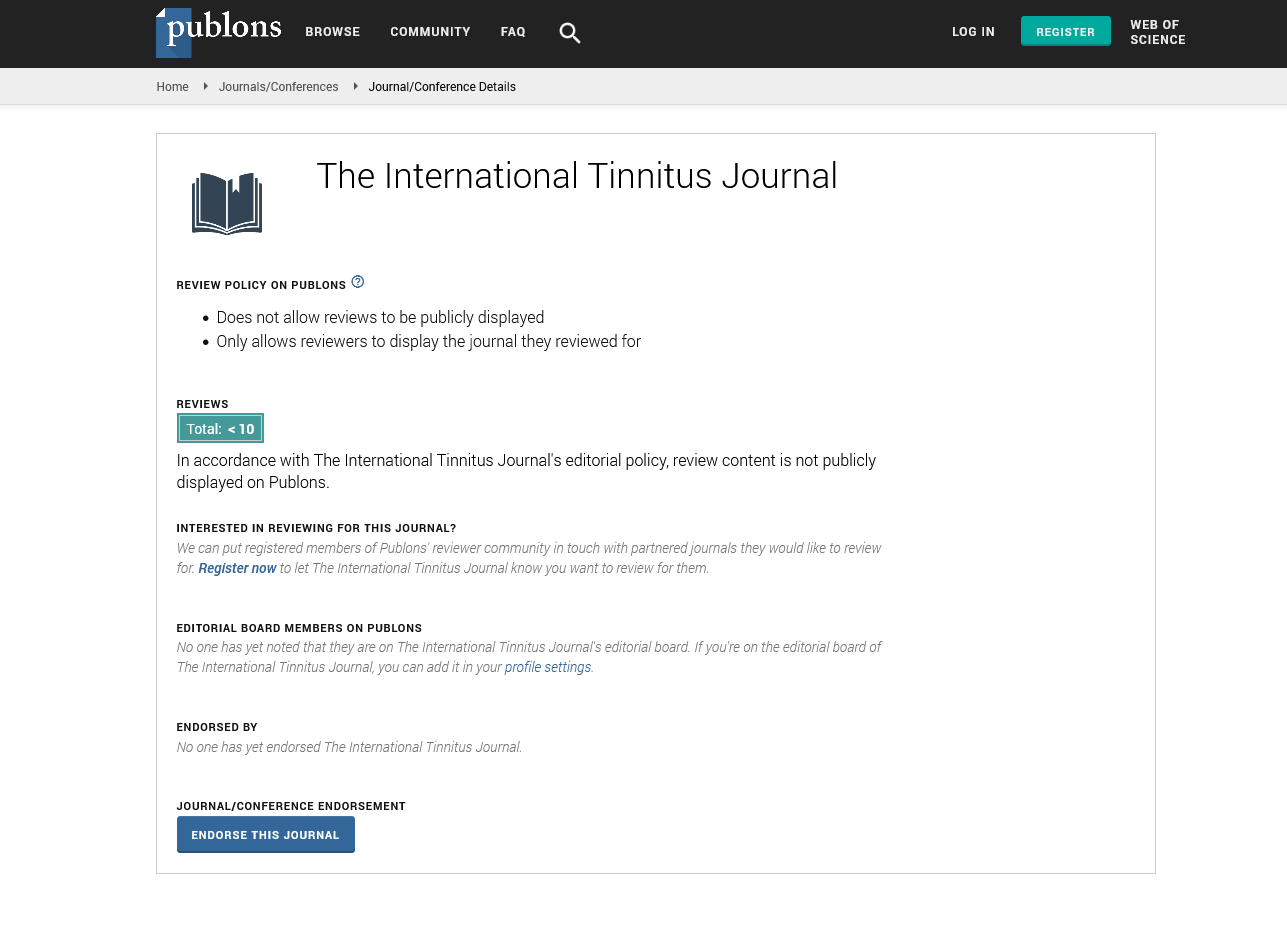The International Tinnitus Journal
Official Journal of the Neurootological and Equilibriometric Society
Official Journal of the Brazil Federal District Otorhinolaryngologist Society
Reach Us 
 +44 7367 141882
+44 7367 141882
ISSN: 0946-5448
All submissions of the EM system will be redirected to Online Manuscript Submission System. Authors are requested to submit articles directly to Online Manuscript Submission System of respective journal.

Google scholar citation report
Citations : 12717
The International Tinnitus Journal received 12717 citations as per google scholar report
The International Tinnitus Journal peer review process verified at publons
Indexed In
- Excerpta Medica
- Scimago
- SCOPUS
- Publons
- EMBASE
- Google Scholar
- Euro Pub
- CAS Source Index (CASSI)
- Index Medicus
- Medline
- PubMed
- UGC
- EBSCO
Abstract
Investigating the Role of Stochastic Resonance in Tinnitus Development Among Patients with Axonal Polyneuropathy
Author(s):Dominika Hojná, Pavel Kunc, Old??ich Vyšata
Tinnitus is a prevalent auditory disorder characterized by the perception of sound without an external source, often significantly impacting quality of life. The Stochastic Resonance (SR) hypothesis suggests that tinnitus arises as a compensatory mechanism where the auditory system amplifies internal neural noise to enhance signal detection in response to hearing loss. This study explores the potential link between axonal loss in peripheral nerves and the development of tinnitus through SR in patients with axonal polyneuropathy. We recruited 82 patients exhibiting clinical symptoms of distal symmetric sensory or sensorimotor polyneuropathy. Electrophysiological assessments, including nerve conduction studies and electromyography, were performed, and the occurrence of tinnitus was evaluated using the Tinnitus Severity Index and Visual Analog Scale. Logistic regression analysis revealed that decreased amplitudes of the Compound Motor Action Potential (CMAP) of the tibial and peroneal nerves are significantly associated with a higher likelihood of experiencing tinnitus (p = 0.012 and p = 0.043, respectively). Additionally, increased Motor Conduction Velocity (MCV) of the peroneal nerve was linked to the presence of tinnitus (p = 0.028). These findings support the hypothesis that axonal loss in peripheral nerves correlates with axonal loss in the auditory nerve, potentially leading to tinnitus through the mechanism of stochastic resonance. Modulation of ion channel function may be a compensatory response to axonal loss, contributing to increased neural noise and the perception of tinnitus. Our study enhances the understanding of the pathophysiology of tinnitus in patients with axonal polyneuropathy and suggests potential targets for future therapeutic interventions. Further research is necessary to validate these conclusions and to investigate the mechanisms by which ion channel modulation affects both peripheral and central nervous systems. Text PDF
Share this



